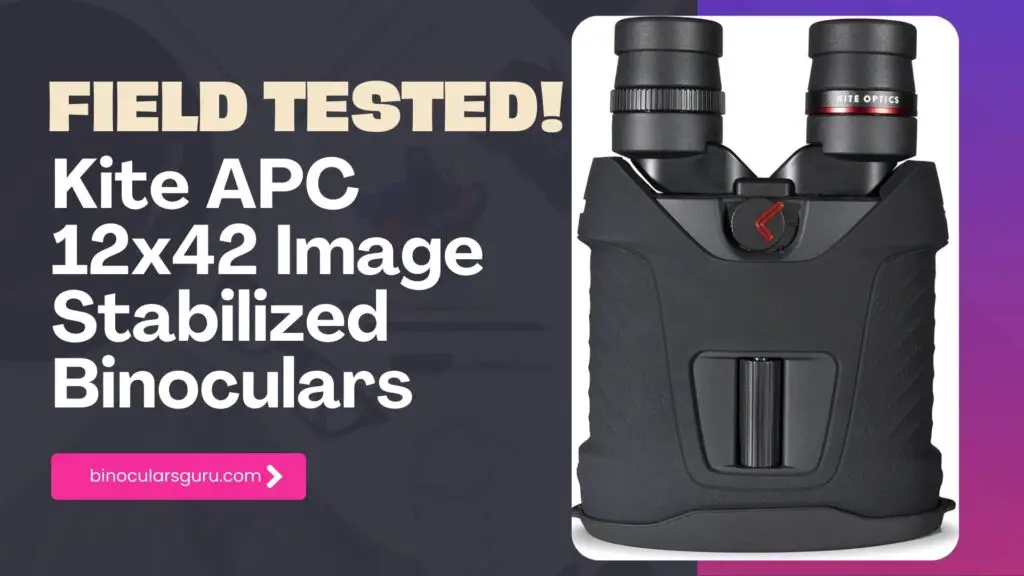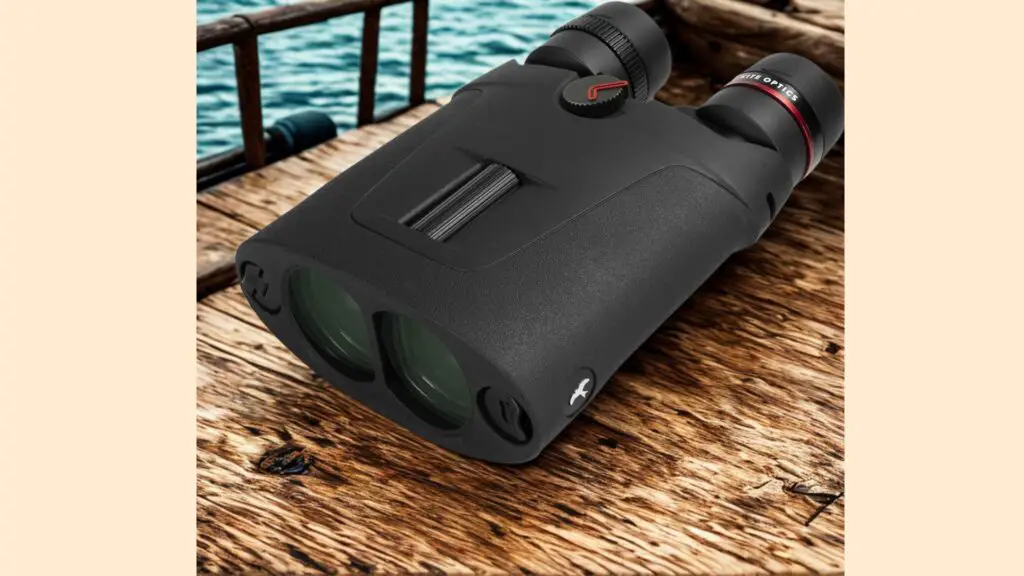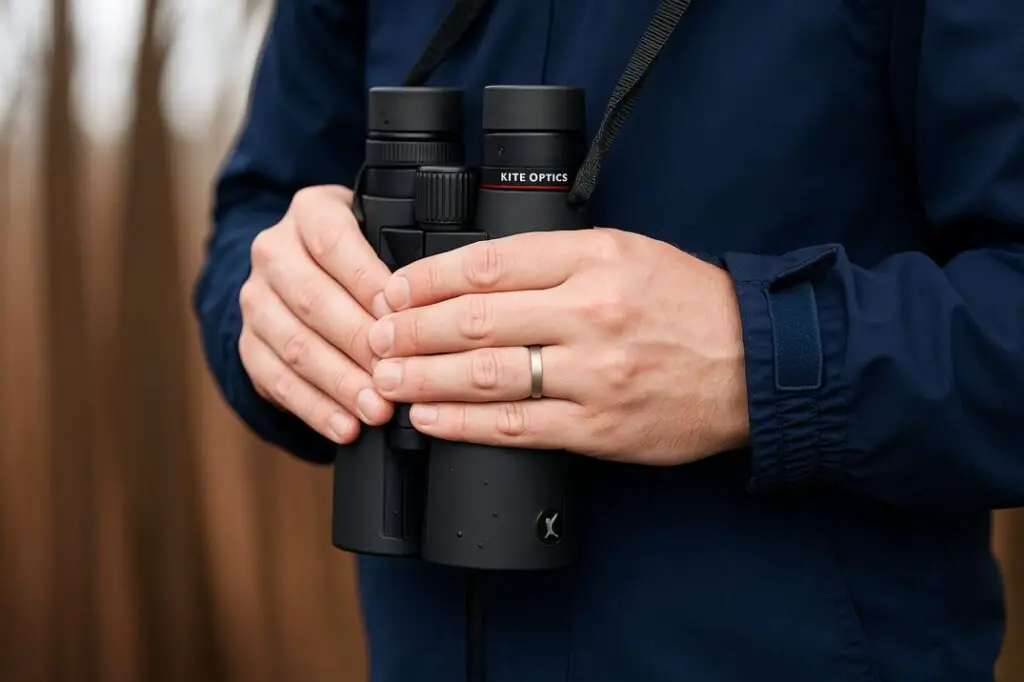Kite APC 12×42 Image Stabilized Binoculars: A Comprehensive Review

Hey there, optics fans! Whether you’re scanning the horizon for seabirds, tracking wildlife in the wilderness, or just love crystal-clear views without the shake, the Kite APC 12×42 Image Stabilized Binoculars might be on your radar.
These binoculars, crafted by Kite Optics, a Belgian brand with a reputation for quality, aim to redefine handheld high-magnification viewing with their advanced gimbal-based stabilization.
But at around £949, they’re a serious investment, and some users have raised concerns about their field of view and optical quality.
I have been field testing these binoculars for a while. Besides, I have also dug into expert reviews, user feedback, and technical details to give you a comprehensive look at what these binoculars offer, where they shine, and where they might fall short. Let’s dive in and see if they’re the right fit for your next adventure.
Specifications
Here’s a detailed breakdown of the Kite APC 12×42’s key specs:
| Specification | Details |
|---|---|
| Magnification | 12x |
| Objective Lens Diameter | 42mm |
| Field of View | 67m at 1000m (3.85°, apparent FOV 46.2°) |
| Light Transmission | 87% |
| Close Focus | 4m |
| Weight | 720g (without batteries), ~820g with batteries |
| Dimensions | 184x128mm |
| Waterproof | IPX7 (submersible up to 1m for 30 minutes) |
| Fog-Proof | Yes, nitrogen-filled |
| Battery Life | 60 hours per two AA batteries, 120 hours with internal spares (four total) |
| Stabilization System | Gimbal-based, corrects 2.2° (38m at 1000m) |
| Guarantee | 30 years (optics and mechanics), 2 years (electronics) |
| Accessories | Soft rainguard, padded lanyard, soft carry case |
These specs position the Kite APC 12×42 as a premium, rugged option for users needing stabilization and durability.
Design and Build Quality
The Kite APC 12×42 is built to withstand the elements while remaining portable. At 720g without batteries, they’re impressively lightweight for 42mm binoculars, making them easy to carry on long outings.
The IPX7 waterproof rating ensures they can handle rain, mist, or even brief submersion, and nitrogen filling prevents internal fogging during temperature swings. I must praise the robust build, especially the “elegant blue” rubberized coating that’s both grippy and durable, ideal for wet or rough conditions.
The binoculars come with a soft, flexible rainguard, a comfortable padded lanyard, and a soft carry case, adding to their practicality. Kite backs the design with a 30-year guarantee on optics and mechanics and a 2-year guarantee on electronics, reflecting confidence in their longevity.
The only quirk is the focusing wheel’s placement at the opposite end from the eyepieces, which might feel unfamiliar but doesn’t detract from its smooth operation.

Optical Performance
Optically, the Kite APC 12×42 delivers mid-range performance that’s solid but not top-tier. The 42mm lenses provide 87% light transmission, offering bright images even in low-light conditions like dawn or dusk.
Colors are vibrant, contrast is strong, and chromatic aberration (color fringing) is relatively low, which is impressive for non-ED glass optics.
I can confidently say that the image quality is “acceptable” for most outdoor activities, with good sharpness for wildlife or marine observation.
However, there are two notable limitations:
Lack of ED Glass: Without Extra-Low Dispersion glass, there may be slight color fringing in high-contrast scenarios, such as bright skies or reflective water. This is particularly noticeable for astronomy, where users have found the optics less suitable.
Narrow Field of View: At 67m at 1000m (3.85°, apparent FOV 46.2°), the FOV is significantly narrower than many competitors, like the Swarovski EL 10×42 (112m at 1000m). This can make it harder to track fast-moving subjects, such as birds, and has been a common criticism among birders.
The 4m close focus is standard but not exceptional, limiting their use for macro observations like insects or nearby flora.
Image Stabilization: The Game-Changer
The standout feature of the Kite APC 12×42 is its gimbal-based image stabilization system, which corrects up to 2.2° of shake (38m at 1000m)—up to 4.4 times more than most stabilized binoculars, which typically offer 0.5°-1°.
Borrowed from smartphone video stabilization technology, this system delivers rock-steady views at 12x magnification, eliminating the need for a tripod in most scenarios.
I can say that the stabilization is “excellent,” and it outperforms older models like the Canon 15×50 IS in consistency and clarity.
This makes the binoculars ideal for:
- Seawatching and Pelagic Trips: Steady views from moving boats.
- Windy Conditions: Clear images despite gusts.
- Shaky Hands or Fatigue: Comfortable for users with tremors or long sessions.
- Distant Observations: Sharp details on far-off wildlife or ships.
The stabilization is enhanced by smart features like automatic sleep mode, which uses sensors to turn the binoculars on when raised and off after 90 minutes of inactivity.
A green light indicates when they’re active, and a flashing red light shows when they’re vertical. Battery life is a highlight, with 60 hours per two AA batteries and 120 hours with internal spares, ensuring you won’t run out of power on multi-day trips.
Ergonomics and Usability
The Kite APC 12×42 is designed for comfort and ease of use. The lightweight, well-balanced body feels secure, even during extended use, and the rubberized grip prevents slips in wet conditions.
The focusing wheel, while placed at the opposite end, is smooth and precise, requiring 1.25 rotations from close focus to infinity and just 0.25 rotations from 10m to long distance. Twist-up eyecups accommodate glasses-wearers, and the overall design is intuitive.
The battery system is a standout, with four AA batteries (two active, two spares) providing up to 120 hours of use. A low-battery indicator keeps you informed, and the automatic power management ensures efficiency.
Overall, I found the ergonomics very comfortable to use and not very tiring, even when I held the binoculars with one hand.
Comparison with Competitors
To put the Kite APC 12×42 in context, let’s compare it to similar image-stabilized binoculars:
| Model | Magnification | Objective Lens | FOV (m at 1000m) | Stabilization | Weight | Price | Key Features |
|---|---|---|---|---|---|---|---|
| Kite APC 12×42 | 12x | 42mm | 67 | 2.2° | 720g | ~£949 | Gimbal IS, waterproof, long battery life |
| Canon 12×36 IS III | 12x | 36mm | 87.5 | ~1° | 660g | ~£600 | Vari-Angle Prism IS, lighter, narrower FOV |
| Fujinon 12×32 Stabilized | 12x | 32mm | ~90 | ~3° | ~600g | ~£700 | Compact, less bright in low light |
- Canon 12×36 IS III: Offers similar magnification but smaller lenses, resulting in dimmer images in low light. Its stabilization is less advanced, and it’s not fully waterproof.
- Fujinon 12×32 Stabilized: Even smaller lenses limit brightness, but it’s compact and has decent stabilization. The Kite’s larger lenses and superior IS make it better for low-light scenarios.
For non-stabilized alternatives, models like the Swarovski EL 10×42 or Vortex Viper HD 10×42 offer wider FOVs (112m and 110m at 1000m, respectively) but lack stabilization, making them less suitable for high-magnification handheld use.

Real-World Use Cases
The Kite APC 12×42 shines in scenarios where stability is critical:
- Seawatching and Marine Use: The stabilization handles boat motion, providing clear views of distant seabirds or ships.
- Wildlife Observation: Ideal for spotting distant animals in open fields or from hillsides, where 12x magnification reveals fine details.
- Windy Conditions: Keeps images steady despite gusts, perfect for coastal or mountainous areas.
- Users with Shaky Hands: A boon for those with tremors or fatigue, ensuring clear views over long sessions.
However, they may fall short for:
- Birding: The narrow FOV makes tracking fast-moving birds challenging, especially in dense forests or busy skies.
- Astronomy: The lack of ED glass and narrower FOV limit their appeal for stargazing, where color fringing can be noticeable.
- Budget-Conscious Buyers: At £949, they’re a premium product, out of reach for casual users.
Pros and Cons
Here’s a summary of the strengths and weaknesses:
| Pros | Cons |
|---|---|
| Exceptional 2.2° image stabilization, ideal for high-magnification viewing | Narrow field of view (67m at 1000m), limiting for birding |
| Lightweight (720g without batteries) and portable | Lack of ED glass may cause slight color fringing in high-contrast scenes |
| IPX7 waterproof and fog-proof, built for tough conditions | High price (~£949) may deter some buyers |
| Long battery life (120 hours with spares) | Focusing wheel placement at opposite end may feel unfamiliar |
| Comfortable, ergonomic design with smooth focusing | Less suitable for astronomy due to optical limitations |
| Strong colors, contrast, and low chromatic aberration | |
| 30-year guarantee on optics and mechanics |
Who Are These Binoculars For?
The Kite APC 12×42 is best suited for:
- Birders and Wildlife Observers: Those focusing on distant, stationary subjects, like seabirds or large mammals, where stabilization trumps FOV.
- Marine Enthusiasts: Perfect for use on boats or in coastal areas, where motion and weather are challenges.
- Users with Shaky Hands: Ideal for anyone struggling with hand tremors or fatigue during long sessions.
- Outdoor Adventurers: Those needing rugged, weatherproof binoculars for varied conditions.
They may not be ideal for:
- Fast-Paced Birding: The narrow FOV hinders tracking quick-moving birds.
- Astronomy: Lack of ED glass and limited FOV make them less suitable for stargazing.
- Budget Buyers: The high price targets serious enthusiasts.
Conclusion
The evidence leans toward the Kite APC 12×42 Image Stabilized Binoculars being a niche but impressive product.
Their gimbal-based stabilization is a standout, offering steady views at 12x magnification that rival or surpass competitors like Canon or Fujinon.
The lightweight, waterproof design and long battery life make them a reliable companion for rugged outdoor use.
However, the narrow field of view and lack of ED glass are notable drawbacks, particularly for birders or astronomers who need wider views or pristine optics.
At ~£949, they’re a premium investment, but for users who prioritize stability—whether on a boat, in windy conditions, or with shaky hands—they’re a compelling choice.
If a wide field of view or top-tier optics are your priority, you might want to explore non-stabilized alternatives.
Ultimately, the Kite APC 12×42 is a specialized tool that excels in its intended role, making it worth considering for the right user.
